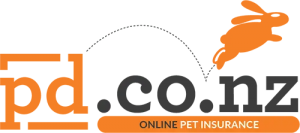
What does AAFCO stand for?
AAFCO is the acronym for the Association of American Feed Control Officials. It’s an organisation with more than 110 years of experience in regulating pet food. AAFCO develops guidelines to measure if pets’ food is ‘healthy and balanced’ according to strict criteria.
The European Pet Food Industry Federation (FEDIAF) is the European equivalent. Ideally you want cat or dog food that meets AAFCO and FEDIAF guidelines.
Since we’re in New Zealand, you might wonder why you’d want AAFCO approved pet food when it’s an American association. The fact is, many cat and dog food regulatory bodies around the world tend to use AAFCO as the golden standard for developing their guidelines. This is precisely one of the reasons AAFCO exists. To provide international standards as guidance for the global pet food industry as a whole.
Another reason is that brands with a long history of success are often international brands that make and sell food for Kiwi and American pets. This food should meet AAFCO criteria.
What about the NZ Pet Food Manufacturers Association?
Organisations that regulate pet food in their respective countries routinely take their cue from AAFCO. They write their standards according to AAFCO International Standards. These are the minimum standards pet food should meet or exceed.
Over here we have the New Zealand Pet Food Manufacturers Association (NZPFMA). The New Zealand Pet Food Manufacturers Association checks AAFCO regulations together with Massey University’s nutrition lab.
You’ll find local cat and dog food makers, marketers and producers worth their salt are listed members of the New Zealand Pet Food Manufacturers Association.
What does the AFFCO do?
AAFCO helps regulate the health and safety of pet food (and pet feeds) around the world. If one cat or dog food brand decides to call an ingredient ‘real beef’ even though it’s actually pig liver and another decides to call chicken ‘free range turkey’ how would customers know?
Simple. One way AAFCO regulates pet food is by setting the following standards:
- Ingredient definitions
- Label standards
- Laboratory standards
If a company follows these guidelines then it meets the minimum criteria AAFCO sets. Some premium foods of course not only meet but exceed these guidelines. If you’re buying these according to your pet’s age, health and breed then their diet should be in good territory.
Pet food labels
One of the trickiest tasks of pet parenting is trying to interpret the information on cat and dog food labels. They’re generally long enough to be the opening passage of a novel and much of what’s listed needs an internet search.
That means you need to set aside time to research the meanings. When really you just want to know you’re getting food that’s good so you can feed your pet and spend quality time with them. Organisations like AAFCO exist to help ensure we can do this.
They do the hard yards so we can more confidently source the pet food our fur kids need.

What does it mean to be AAFCO certified?
When it comes to pet food AAFCO is global and golden, but it doesn’t certify brands. Rather it establishes guidelines that pet food makers can either meet or not.
Companies that meet AAFCO requirements check their pet food products meet these guidelines. The responsibility to ensure their pet food product meets the nutritional and label guidelines is on the pet food company. They have to have their product tested via laboratory analyses and ensure they use the correct ingredient definitions in their product labels.
Other things to know when choosing pet food
Don’t randomly give your cat dog food or feed your kitten adult cat food. The needs of different species, age groups, breeds and life cycles need to be appropriately catered for.
Cats vs dogs
For example, dogs can consume a variety of protein and veg whereas cats are obligate carnivores. In other words they need to eat 100% meat.
Breed and age
Big breeds like the Saint Bernard or Maine Coon have specific vitamin and mineral needs to support their muscles and bones. They tend to grow for longer and have different lengths of time for these growth phases than the average across breeds. Giving them the right food for their breed and age profile may help avoid conditions like hip dysplasia and elbow dysplasia down the line.
Health and life stage
Not only should you buy an AAFCO approved food that’s health, breed and species specific, but it should be life stage specific too. If your cat or dog is pregnant or lactating, their energy needs more than double. This is a drastic change in intake of highly specific essential vitamins and minerals, proteins, fats and carbohydrates.
If you want to do the best by your pet, it might not be a good idea to ad-lib. You’re not resting on your laurels by choosing an AAFCO approved pet food. Rather you’re buying a science backed diet your pet needs.

Is raw dog food AAFCO approved?
Raw dog food isn’t really prepared, so it’s not at the level where it can be checked against AAFCO guidelines. While many pet owners are looking at healthy diets for themselves that pets can eat, too, these need serious consideration.
Compare pet insurance providers here!
About the reviewer of this page
This report was reviewed by Canstar Content Producer, Caitlin Bingham. Caitlin is an experienced writer whose passion for creativity led her to study communication and journalism. She began her career freelancing as a content writer, before joining the Canstar team.
Enjoy reading this article?
You can like us on Facebook and get social, or sign up to receive more news like this straight to your inbox.
By subscribing you agree to the Canstar Privacy Policy





Share this article